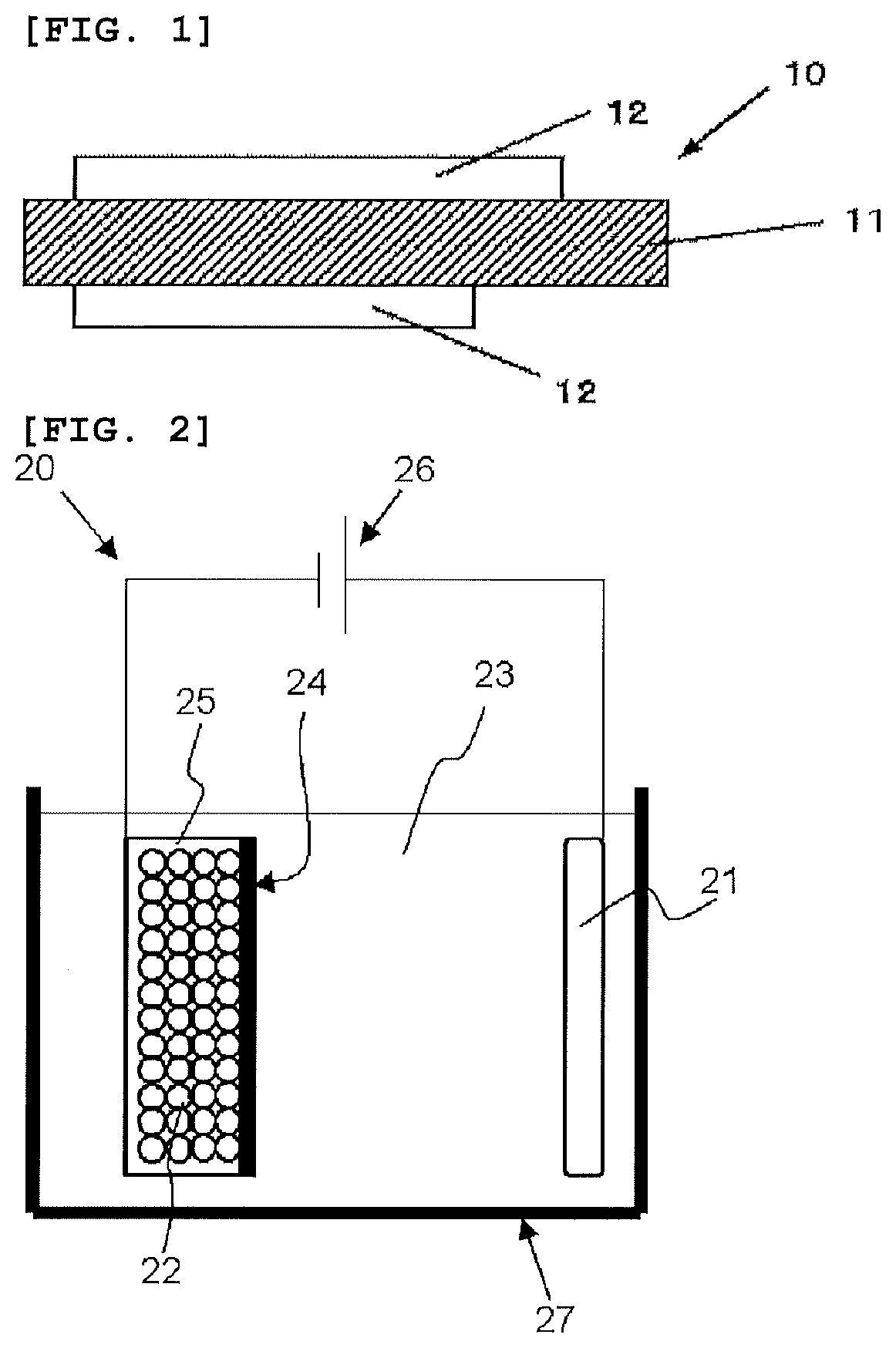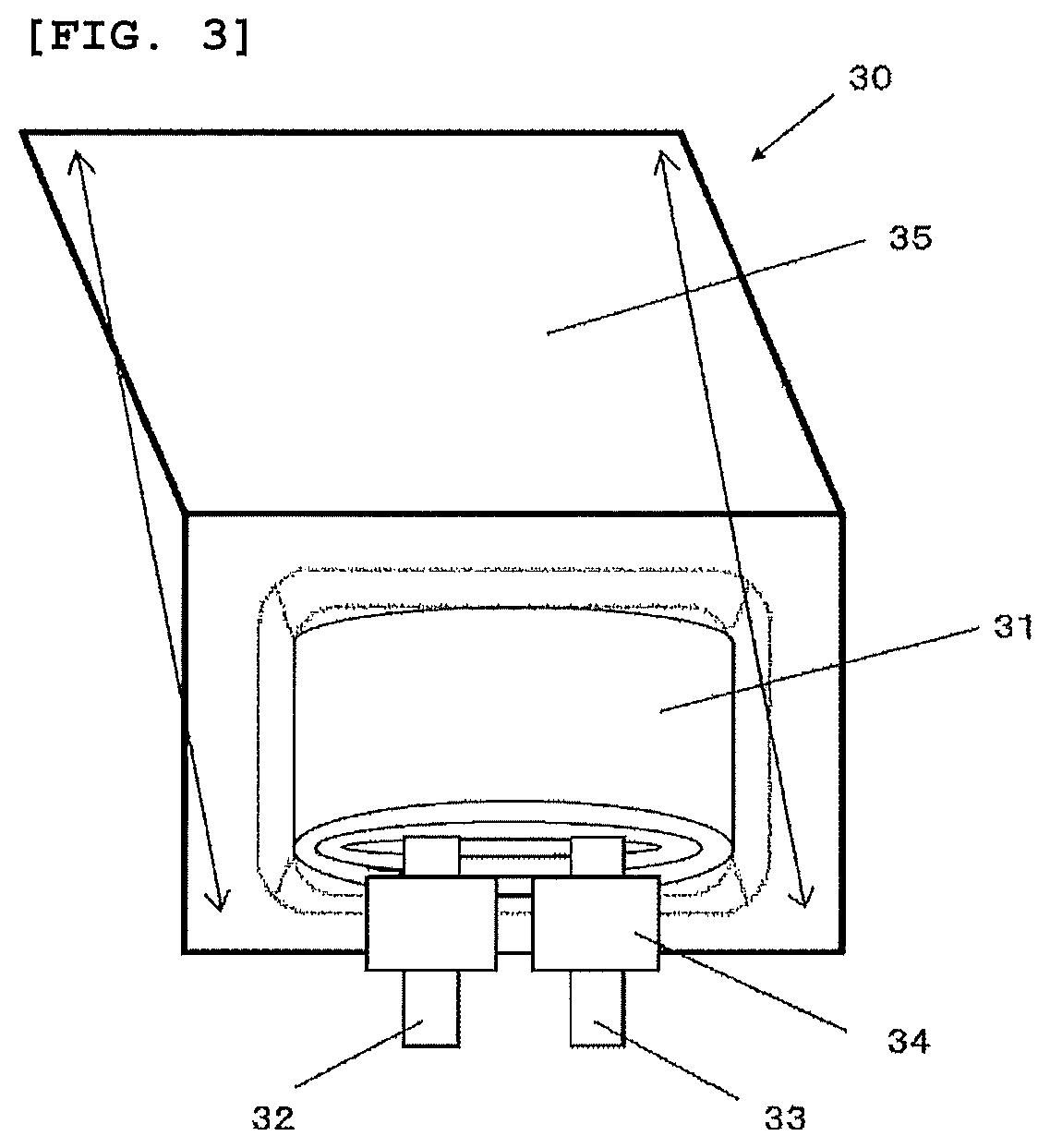Negative electrode active material for non-aqueous electrolyte secondary battery, non-aqueous electrolyte secondary battery, and method for producing negative electrode material for non-aqueous electrolyte secondary battery
a secondary battery and negative electrode technology, applied in the direction of cell components, electrochemical generators, silicates, etc., can solve the problems of battery characteristics degradation, consumption of electrolyte, etc., and achieve favorable battery capacity, cycle characteristics, and first time charge-discharge characteristics. , the effect of improving the stability of slurry preparation
- Summary
- Abstract
- Description
- Claims
- Application Information
AI Technical Summary
Benefits of technology
Problems solved by technology
Method used
Image
Examples
example 1-1
[0142]The laminate film type secondary battery 30 shown in FIG. 3 was prepared by the following procedure.
[0143]The procedure began with the production of a positive electrode. A positive-electrode mixture was prepared by mixing 95 parts by mass of lithium-nickel-cobalt-aluminum complex oxide (LiNi0.7Co0.25Al0.05O) as a positive electrode active material, 2.5 parts by mass of a positive electrode conductive assistant agent (acetylene black), and 2.5 parts by mass of a positive electrode binding agent (polyvinylidene fluoride: PVDF). Then, the positive-electrode mixture was dispersed in an organic solvent (N-methyl-2-pyrrolidone: NMP) to form paste slurry. The slurry was subsequently applied to both surfaces of a positive electrode current collector with a coating apparatus having a die head and dried with a drying apparatus of hot-air type. The positive electrode current collector used here had a thickness of 15 μm. The resultant was finally compressed with a roll press.
[0144]Next, ...
examples 1-2 to 1-11
, Comparative Examples 1-1, 1-2
[0156]Secondary batteries were prepared under the same conditions as in Example 1-1, except that the kind of lithium silicate to be incorporated inside the silicon compound particles and the intensity ratios Ib / Ia and Ic / Ia were changed as shown in Table 1. The cycle characteristics and first-time efficiency were then evaluated. The Li doing amount was altered to change the kind of lithium silicate and adjust the intensity ratios.
[0157]Table 1 shows the evaluation results of Examples 1-1 to 1-11 and Comparative Examples 1-1, 1-2.
TABLE 1SiOx (x = 1), carbon coverage: 3 mass %, D50 = 6.7 μm,modification method: oxidation-reduction methodCycleFirst-timeretentionefficiencyrate (%)(%)300thLiGas1.2 VcyclecompoundIb / Ia Ic / Ia generationconditionconditionExample 1-1Li2SiO3,1.52 >7 days88.6%86.0%Li2Si2O5Example 1-2Li2Si2O50 1.5>7 days81.2%85.8%Example 1-3Li2SiO3,0 2 >7 days82.4%85.9%Li2Si2O5Example 1-4Li2SiO3,0.33.1>7 days83.9%86.2%Li2Si2O5Example 1-5Li2SiO3...
examples 2-1 to 2-4
, Comparative Examples 2-1, 2-2
[0159]Secondary batteries were produced as in Example 1-1, except for adjusting the oxygen amount in the bulk of the silicon compound. In these events, the oxygen amount was adjusted by changing the heating temperature or the ratio of metallic silicon and silicon dioxide in the raw material of the silicon compound.
[0160]Further, the gas generation status, cycle characteristics, and first-time efficiency were evaluated under the same conditions as in Example 1-1. Each “x” value of the silicon compound shown by SiOx in Examples 1-1, 2-1 to 2-4, and Comparative Examples 2-1, 2-2 is shown in Table 2.
TABLE 2SiOx, carbon coverage: 3 mass %, D50 = 6.7 μm, modificationmethod: oxidation-reduction method,Li2Si2O5, Li2SiO3, XRD peak intensity ratios: Ib / Ia = 1.5,Ic / Ia = 2CycleFirst-timeretentionefficiencyrate (%)(%)300thSiOxGas1.2 VcycleTable 2x=generationconditionconditionExample 1-11>7 days88.6%86.0%Comparative0.3 1 day78.1%64.0%Example 2-1Example 2-10.5>7 days...
PUM
| Property | Measurement | Unit |
|---|---|---|
| chemical shift | aaaaa | aaaaa |
| chemical shift | aaaaa | aaaaa |
| chemical shift | aaaaa | aaaaa |
Abstract
Description
Claims
Application Information
 Login to View More
Login to View More - R&D
- Intellectual Property
- Life Sciences
- Materials
- Tech Scout
- Unparalleled Data Quality
- Higher Quality Content
- 60% Fewer Hallucinations
Browse by: Latest US Patents, China's latest patents, Technical Efficacy Thesaurus, Application Domain, Technology Topic, Popular Technical Reports.
© 2025 PatSnap. All rights reserved.Legal|Privacy policy|Modern Slavery Act Transparency Statement|Sitemap|About US| Contact US: help@patsnap.com


